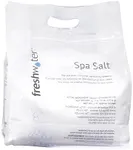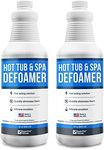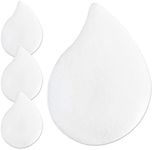Buying Guide for the Best Hot Tub Chemicals
Choosing the right hot tub chemicals is essential for maintaining clean, safe, and enjoyable water. The right chemicals will help you balance the water's pH, sanitize it, and prevent the growth of harmful bacteria and algae. Understanding the key specifications and how they affect your hot tub's water quality will help you make informed decisions and keep your hot tub in optimal condition.SanitizersSanitizers are chemicals used to kill bacteria and other microorganisms in your hot tub water. The most common types are chlorine and bromine. Chlorine is effective and widely used, but it can have a strong odor and may cause skin irritation for some people. Bromine is less harsh on the skin and has a milder smell, but it can be more expensive. Choose a sanitizer based on your sensitivity to chemicals and your preference for maintenance frequency, as bromine typically requires less frequent application.
pH BalancerspH balancers help maintain the water's pH level within the ideal range of 7.2 to 7.8. A balanced pH is crucial because water that is too acidic or too alkaline can cause skin irritation, damage the hot tub components, and reduce the effectiveness of sanitizers. pH increasers (sodium carbonate) raise the pH level, while pH decreasers (sodium bisulfate) lower it. Regularly test your water and adjust the pH as needed to keep it within the optimal range.
Alkalinity IncreasersTotal alkalinity is a measure of the water's ability to resist changes in pH. Maintaining proper alkalinity (80-120 ppm) helps stabilize the pH levels and prevents fluctuations that can lead to water quality issues. Alkalinity increasers, usually made of sodium bicarbonate, are used to raise the alkalinity level. If your hot tub water's alkalinity is too low, it can cause the pH to become unstable, leading to potential damage to the hot tub and discomfort for users.
Calcium Hardness IncreasersCalcium hardness refers to the amount of dissolved calcium in the water. The ideal range for hot tubs is 150-250 ppm. Low calcium levels can cause the water to become corrosive, damaging the hot tub's components, while high levels can lead to scale formation on the surfaces and equipment. Calcium hardness increasers are used to raise the calcium level if it is too low. Regularly test your water and adjust the calcium hardness to protect your hot tub and ensure a comfortable soaking experience.
Shock TreatmentsShock treatments are used to oxidize and eliminate organic contaminants, such as body oils, sweat, and lotions, that can build up in the water. Shocking the water also helps to reactivate sanitizers and improve water clarity. There are two main types of shock treatments: chlorine-based and non-chlorine-based. Chlorine-based shocks are more potent and effective at killing bacteria, while non-chlorine shocks are gentler and can be used more frequently. Choose a shock treatment based on your hot tub usage and sensitivity to chlorine.
AlgaecidesAlgaecides are chemicals used to prevent and control algae growth in your hot tub. Algae can make the water cloudy, slippery, and unpleasant. There are different types of algaecides, including copper-based and quaternary ammonium compounds. Copper-based algaecides are highly effective but can stain surfaces if not used correctly, while quaternary ammonium compounds are less likely to cause staining but may require more frequent application. Select an algaecide based on your preference for maintenance and the specific needs of your hot tub.






















